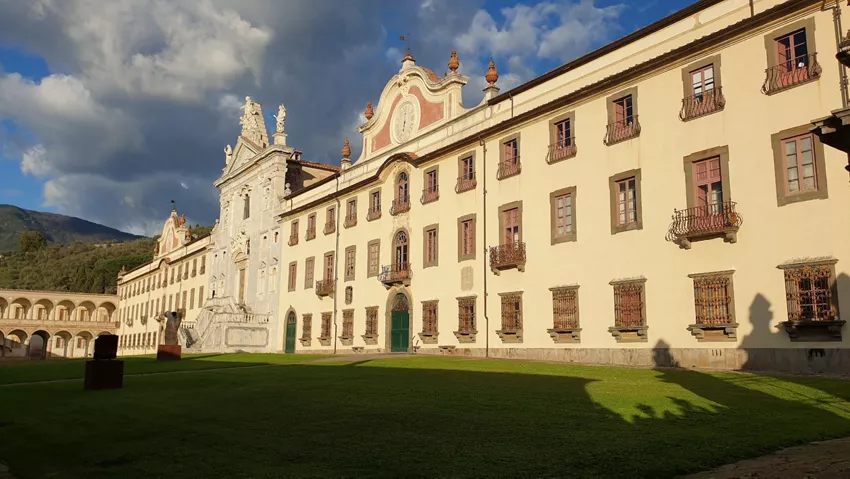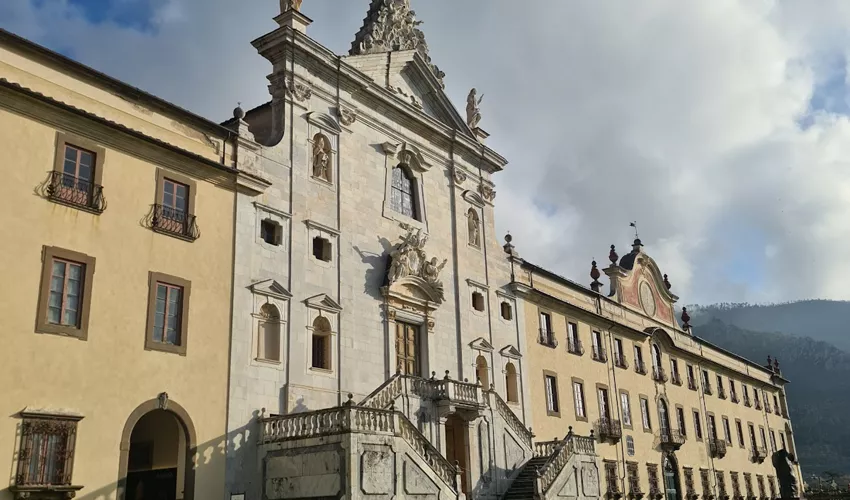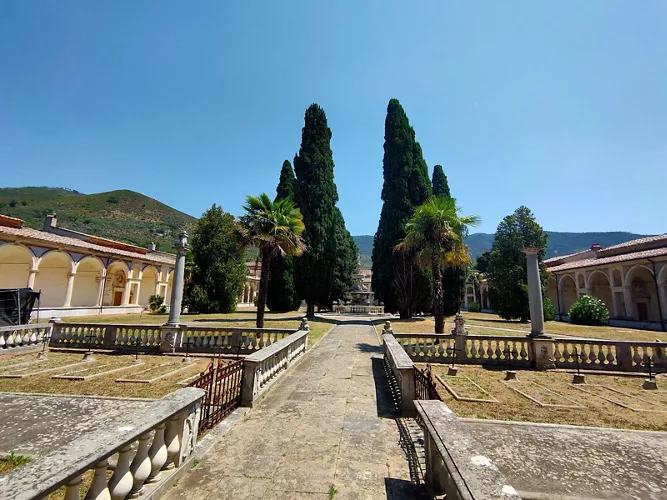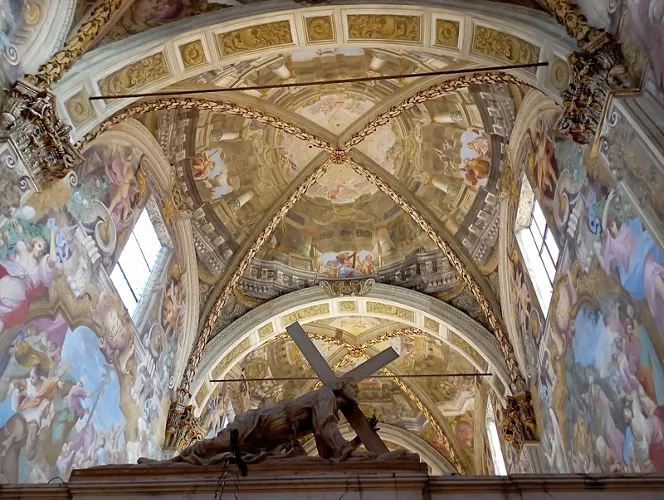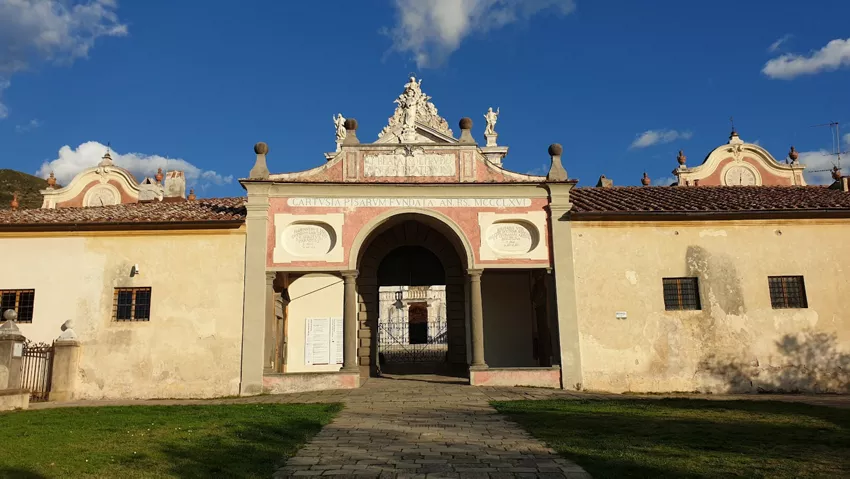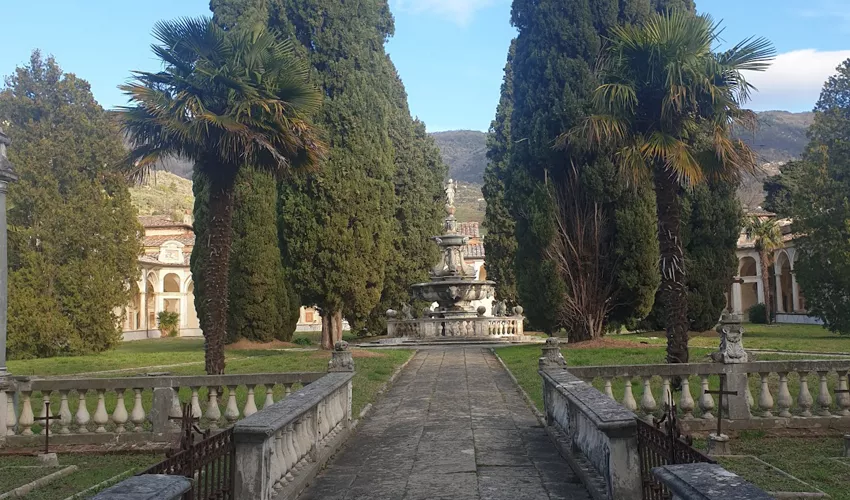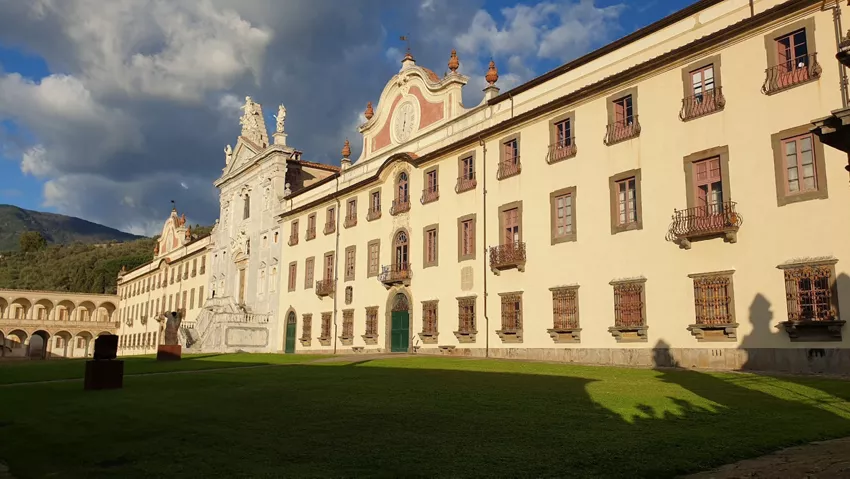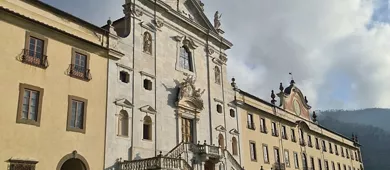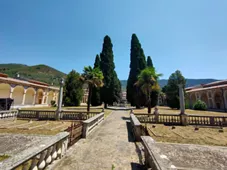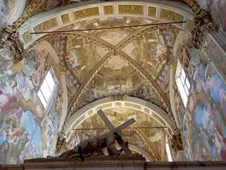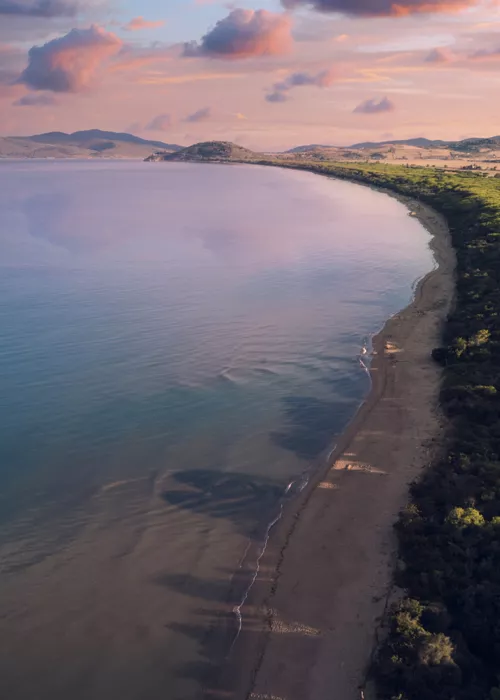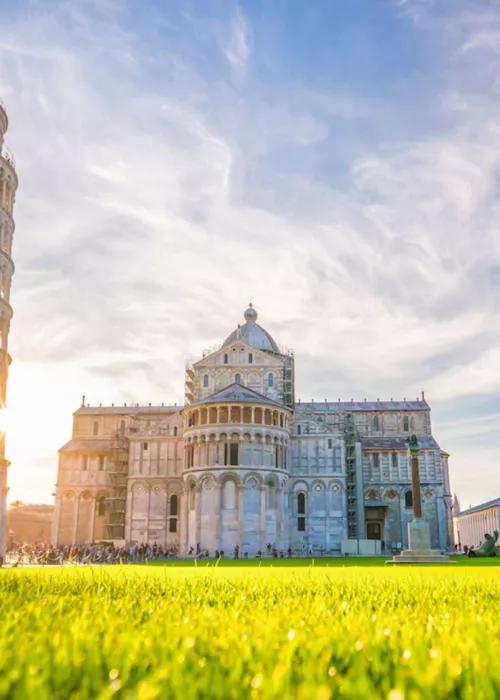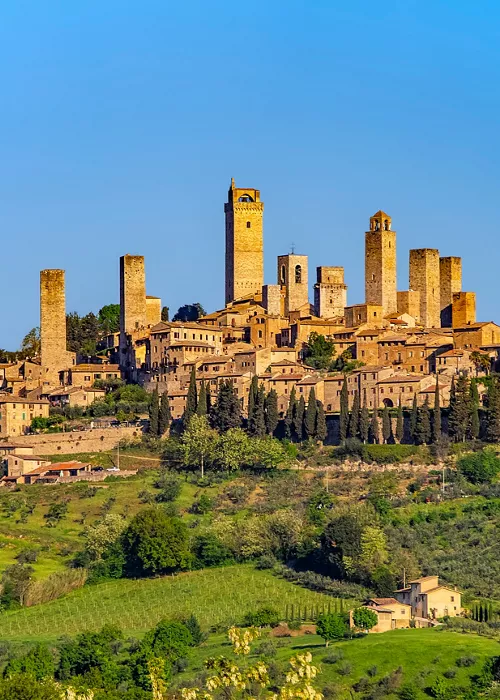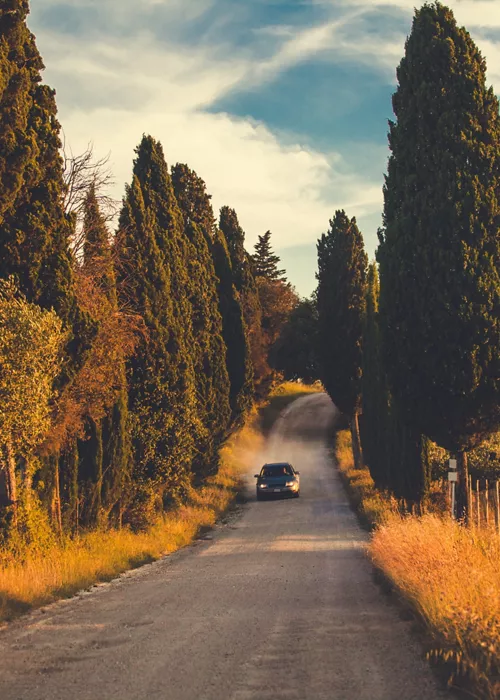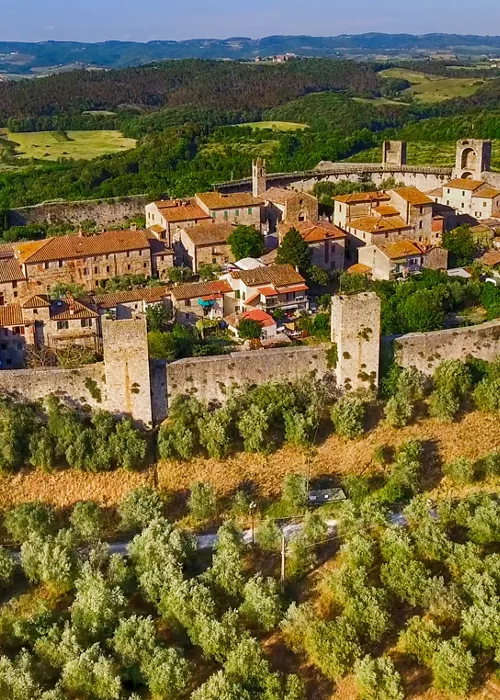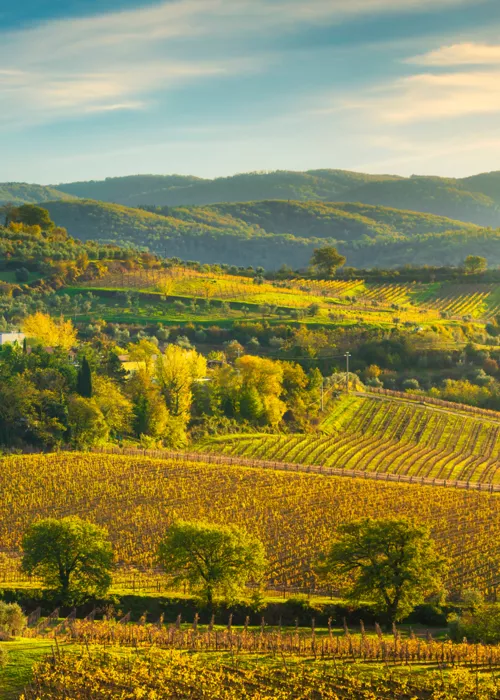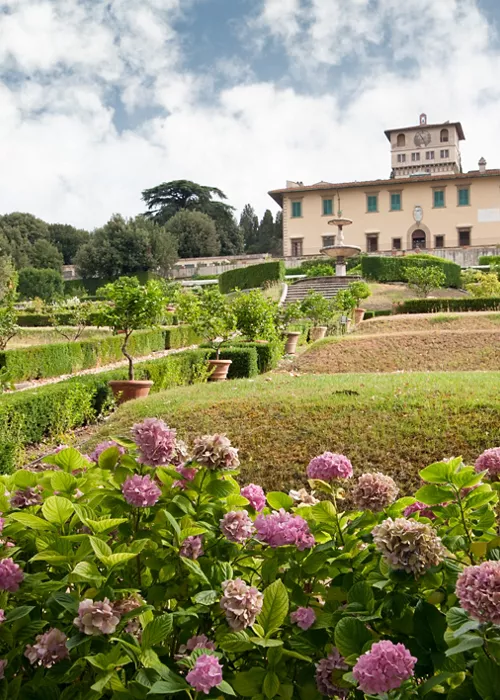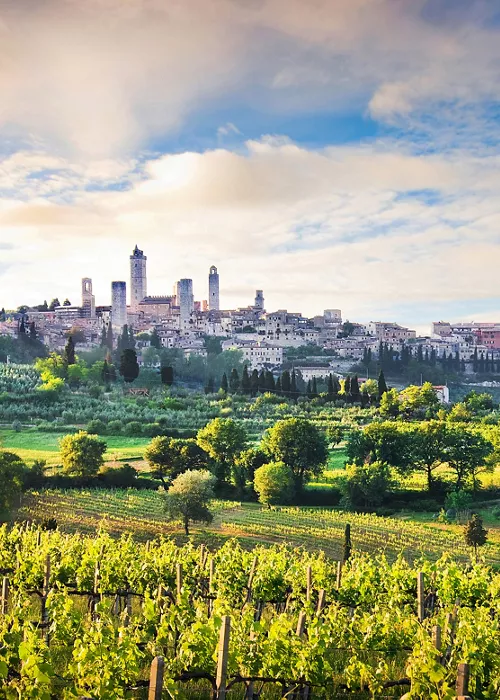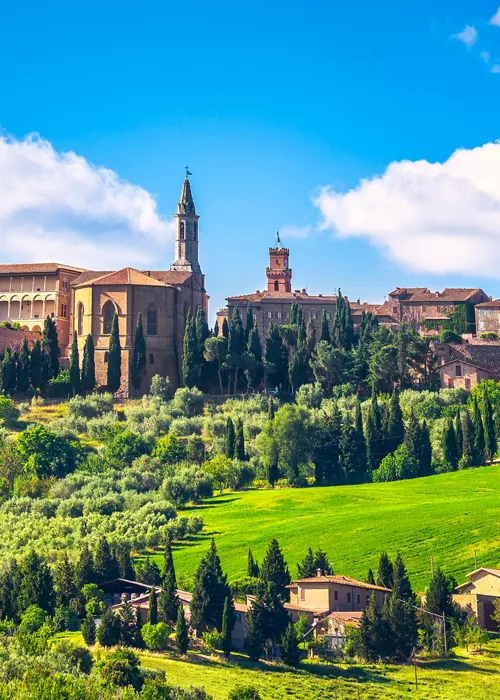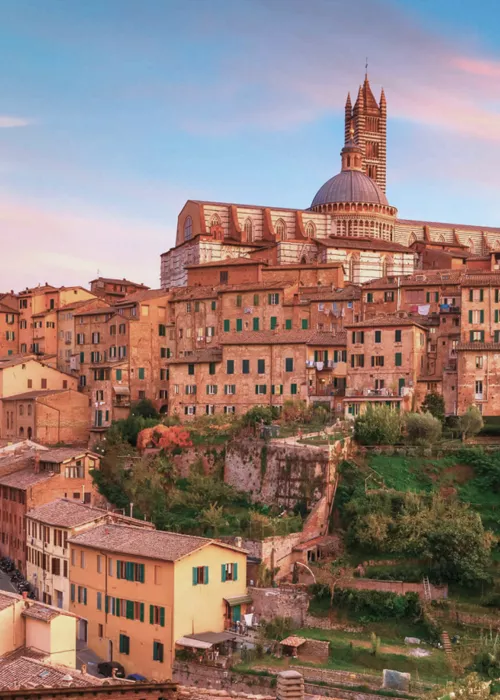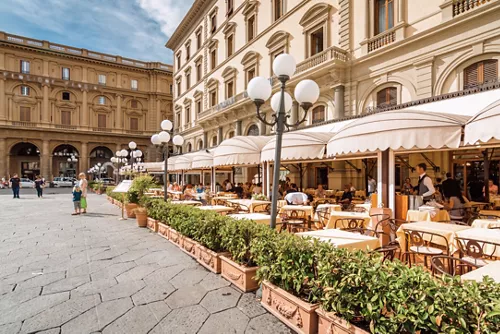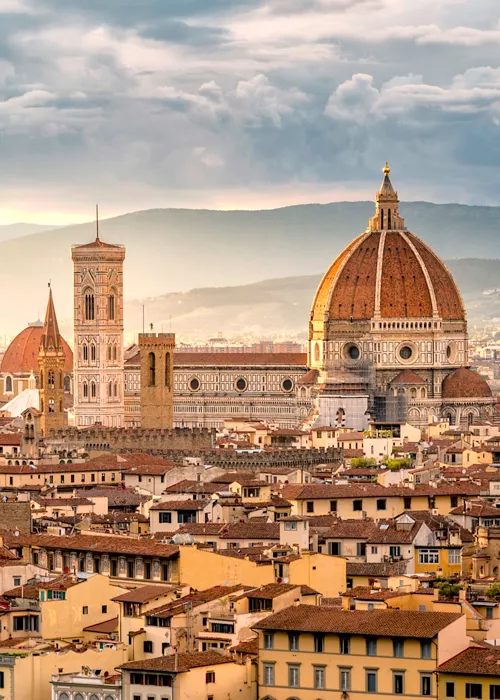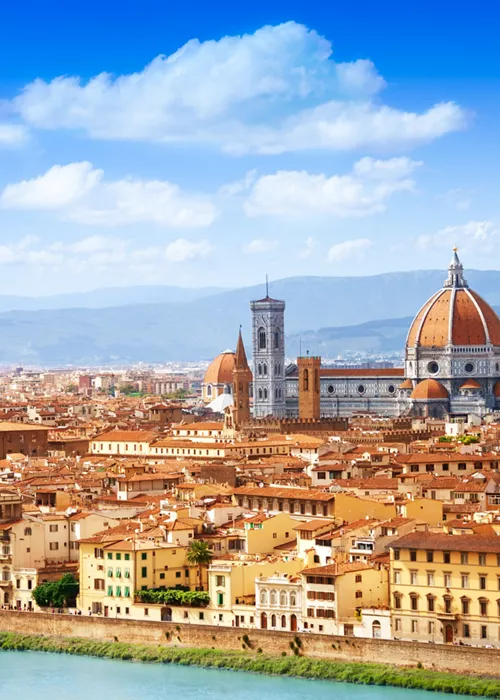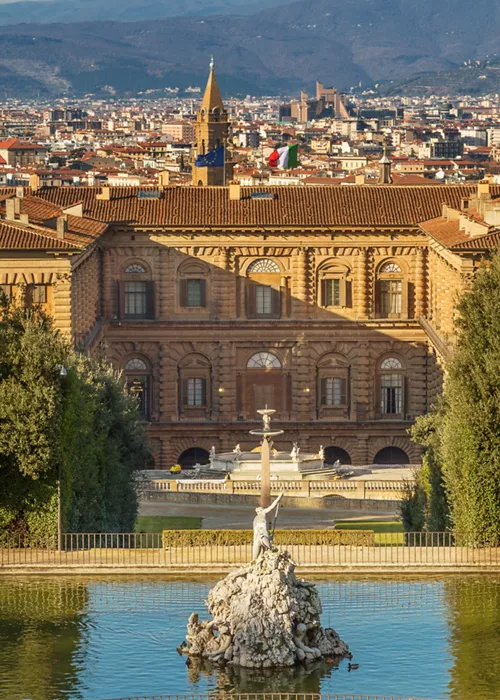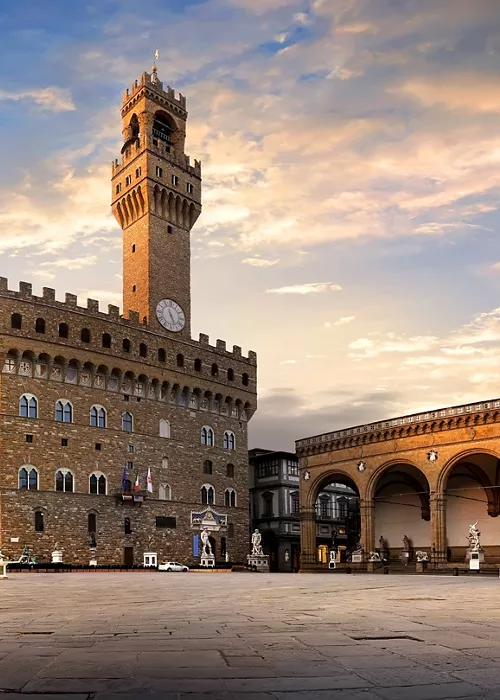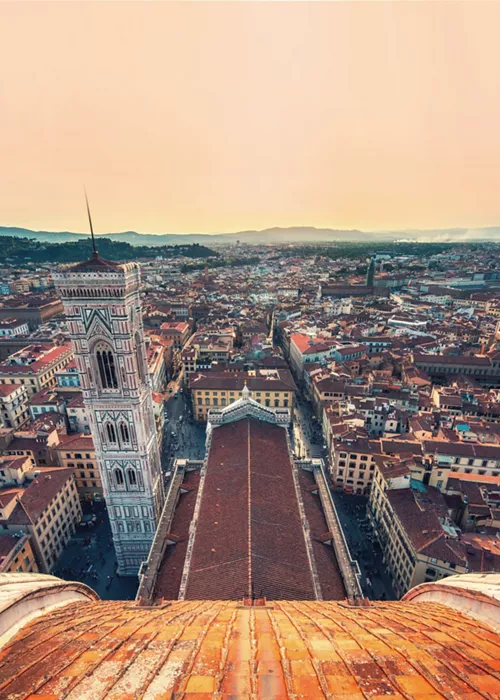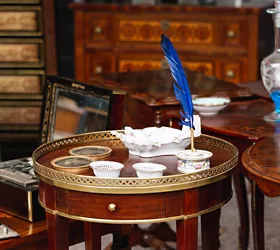Founded in 1366, the Chartreuse of Calci, supported by the high lineage families of Pisa, stands on the Valgraziosa among olive trees, about one kilometre from the centre of Calci. The structure can be reached from two avenues with an attractive pedestrian path, from which one can enjoy a perspective view of the double façade of the complex. The outermost, lower, was intended for buildings that were also accessible to local residents, including the pharmacy, the chapel of St Sebastian or of Ladies, the parlour, and a court of honour separated by a large lawn. The façade of the monastery, in the centre of which stands the majestic white marble church with a double flight of steps and a tympanum with a statue of the Assumption between angels, is the most important building. The convent, a cloistered monastery of the Carthusian Order of St Bruno, was suppressed during the Napoleonic and Savoy regimes, but was once again inhabited by the monks until 1969, when they finally abandoned it.
After restoration work, the church was once again opened to the public. The Choir of Fathers, the High Altar and the two marble Angels by Andrea Vaccà can be admired. The complex includes rooms dedicated to hermit life (including a cell open for visits), religious rooms (church and chapels) and rooms for cenobitic life (refectory and chapter house). On display in the sacristy is the Atlantic Bible, an extraordinary 12th-century illuminated codex in four volumes. The tour ends with the grand ducal guest quarters, the cloister of the guest quarters, the picture gallery and the long corridors with frescoes and decorations.
The ground floor of the Monumental Chartreuse houses the Historical Archive and the Monastic Library, dating back to 1770, with a diplomatic collection of 3307 parchments from 999 to 1796, and a library with 2320 specimens, including modern manuscripts, 5 incunabula, 65 16th-century editions, 165 17th-century editions and more than 1200 editions from the 18th century and the first decades of the 19th century. The archive and library are catalogued and available on the National Library Service, but can only be accessed with permission by scholars or during special events and guided tours.
Finally, the Carthusian Monastery houses the Natural History Museum of the University of Pisa, set up in the monastery's service rooms, including the 100-metre granary, oil mill, laundries and service courtyards for agricultural activities.



